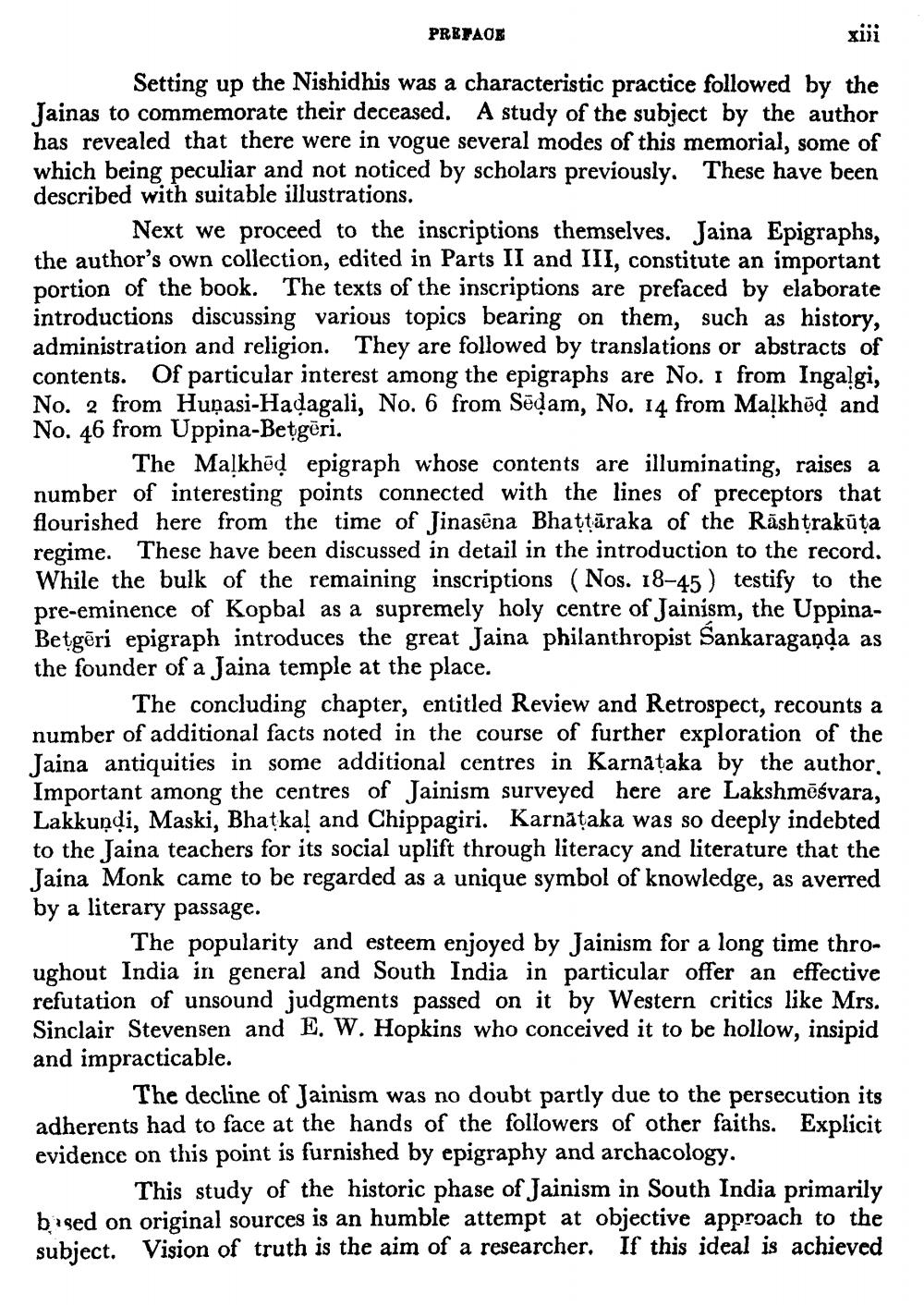________________
PREFACE
XIII
Setting up the Nishidhis was a characteristic practice followed by the Jainas to commemorate their deceased. A study of the subject by the author has revealed that there were in vogue several modes of this memorial, some of which being peculiar and not noticed by scholars previously. These have been described with suitable illustrations.
Next we proceed to the inscriptions themselves. Jaina Epigraphs, the author's own collection, edited in Parts II and III, constitute an important portion of the book. The texts of the inscriptions are prefaced by elaborate introductions discussing various topics bearing on them, such as history, administration and religion. They are followed by translations or abstracts of contents. Of particular interest among the epigraphs are No. 1 from Ingalgi, No. 2 from Hunasi-Haḍagali, No. 6 from Sedam, No. 14 from Malkhod and No. 46 from Uppina-Betgeri.
The Malkhed epigraph whose contents are illuminating, raises a number of interesting points connected with the lines of preceptors that flourished here from the time of Jinasena Bhaṭṭaraka of the Rashtrakuta regime. These have been discussed in detail in the introduction to the record. While the bulk of the remaining inscriptions (Nos. 18-45) testify to the pre-eminence of Kopbal as a supremely holy centre of Jainism, the UppinaBetgeri epigraph introduces the great Jaina philanthropist Sankaraganda as the founder of a Jaina temple at the place.
The concluding chapter, entitled Review and Retrospect, recounts a number of additional facts noted in the course of further exploration of the Jaina antiquities in some additional centres in Karnataka by the author. Important among the centres of Jainism surveyed here are Lakshmēśvara, Lakkundi, Maski, Bhatkal and Chippagiri. Karnataka was so deeply indebted to the Jaina teachers for its social uplift through literacy and literature that the Jaina Monk came to be regarded as a unique symbol of knowledge, as averred by a literary passage.
The popularity and esteem enjoyed by Jainism for a long time throughout India in general and South India in particular offer an effective refutation of unsound judgments passed on it by Western critics like Mrs. Sinclair Stevensen and E. W. Hopkins who conceived it to be hollow, insipid and impracticable.
The decline of Jainism was no doubt partly due to the persecution its adherents had to face at the hands of the followers of other faiths. Explicit evidence on this point is furnished by epigraphy and archacology.
This study of the historic phase of Jainism in South India primarily based on original sources is an humble attempt at objective approach to the subject. Vision of truth is the aim of a researcher. If this ideal is achieved




